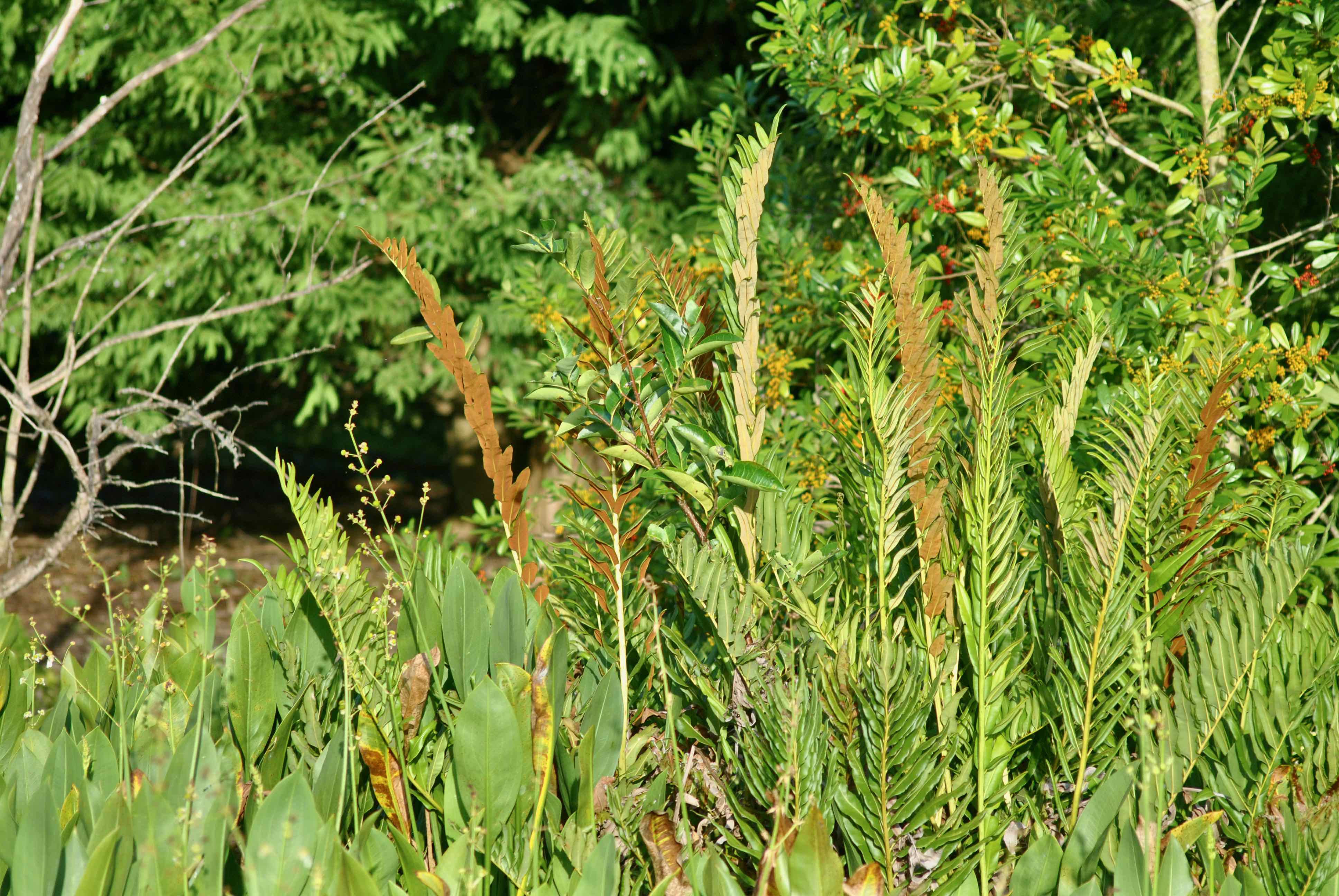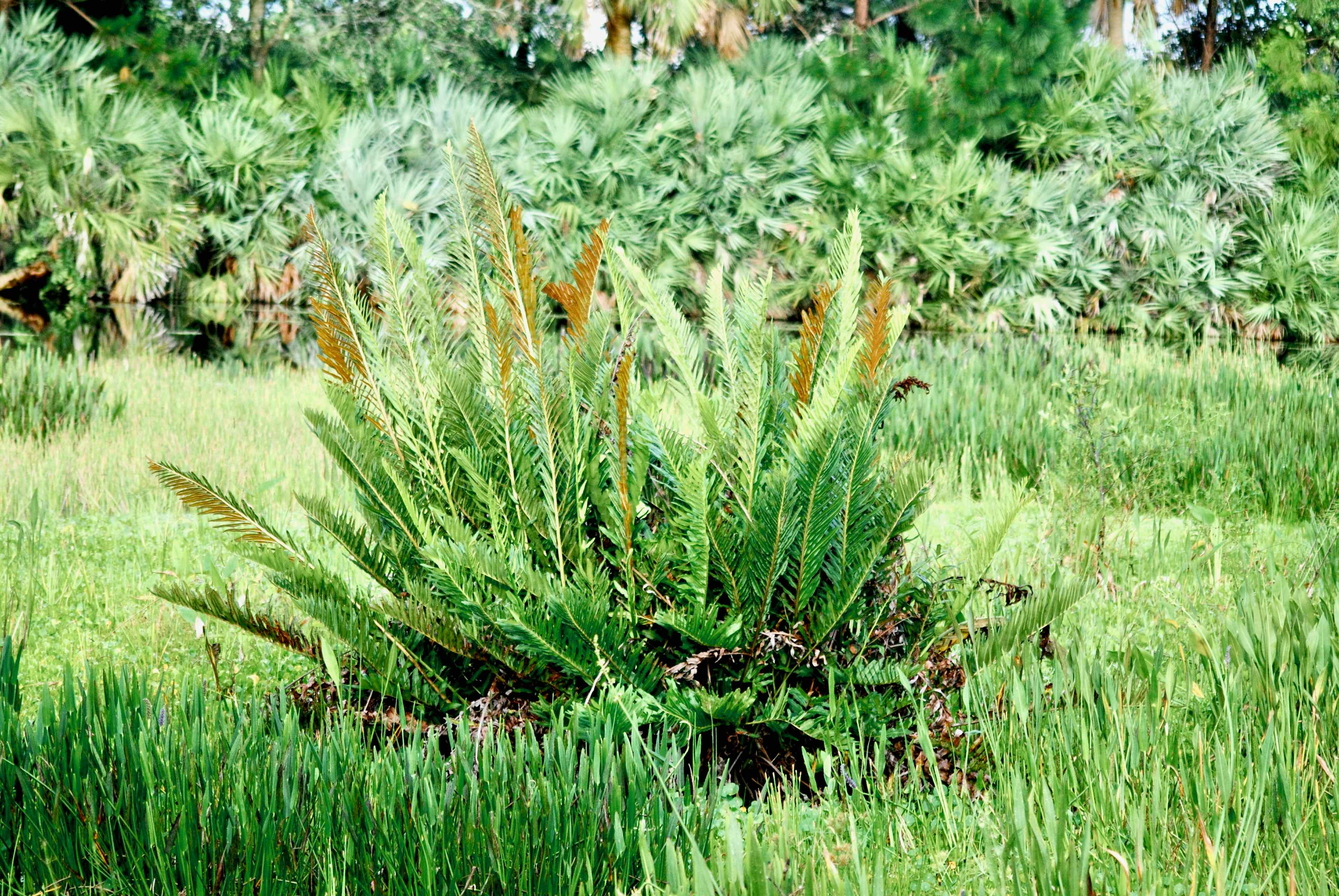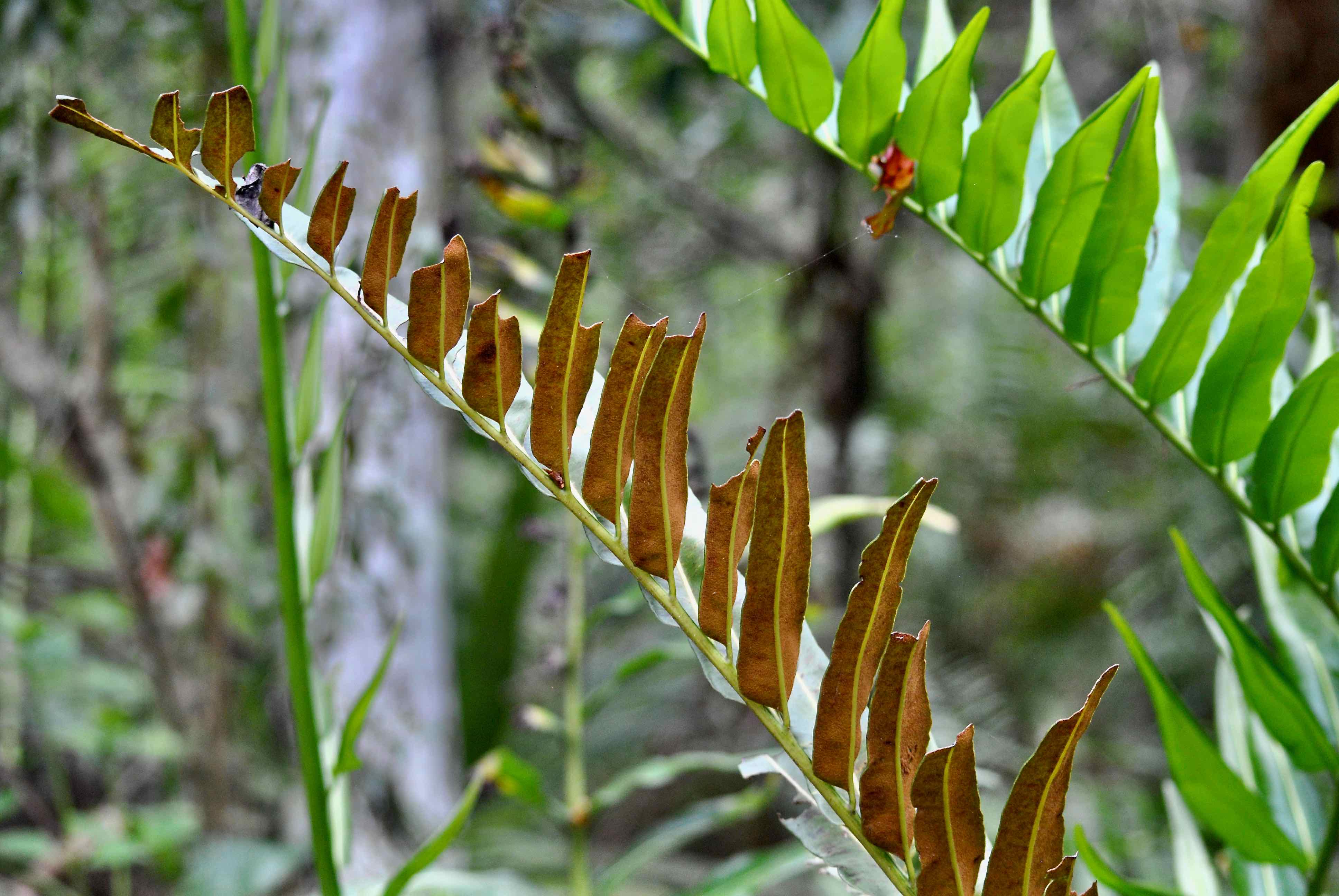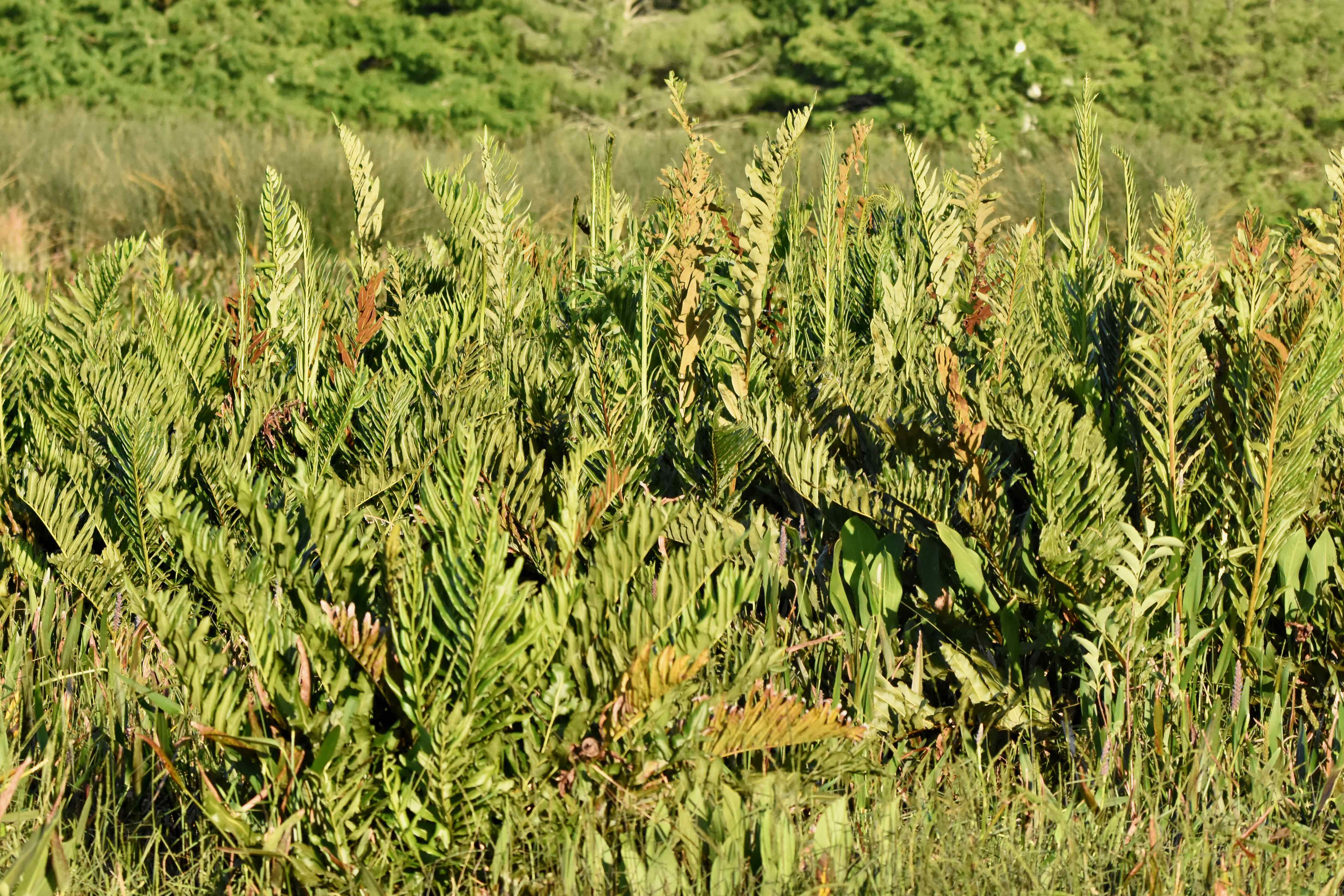
Giant leather fern, photographed at Green Cay Nature Center, Boynton Beach, Palm Beach County, in May 2017.
The giant leather fern, Acrostichum danaeifolium, is perfectly named. It is mammoth, with fronds as long as 12 feet and a girth just as wide. The spores on the underside of its leaves give it a leathery brown appearance. Add the two together and you have giant leather fern.
It usually stands well above its neighbors in Florida’s wetlands, wet prairies, marshes and swamps.
The giant leather fern is a Florida native and the largest fern growing in the state. It has limited cold tolerance (to about 15 degrees, according to the University of Florida), which is why it's found only in Florida among the 50 states. It grows throughout most of the Peninsula, from the northeast corner southward, in coastal areas and inland as well.
The Caribbean, Mexico, Central America and South America to Brazil are also in its native range. At least one source includes Western Africa. It's sometimes confused with golden leather fern, but that plant within Florida is only found in the southwestern counties, and even there, it's usually a cultivated rather than wild plant.
Young giant leather ferns look so different from their parents that they can be confused with flowering plants. Mature plants have both fertile and infertile fronds, fertile being brown underneath, infertile green. Giant leather fern is an important source of cover for birds and other animals. It has a strong root system, and forms networks of rhizomes, or underground stems, that help protect lake and pond banks and the edges of streams against erosion.
It is a vigorous grower. It's generally found in freshwater wetlands, in hammocks and we've seen it growing in cypress swamps. But it can tolerate enough salt that it will grow in mangrove swamps. It likes full sun, but can take some shade. It is used in landscaping as a specimen plant, and in habitat restorations, but it requires constantly wet soil, which makes it impractical for many sites. Its sheer size also can limit its usefulness.
Like many other ferns, the young shoots of giant leather fern, or fiddleheads as they're called, are cooked and eaten. In some places, the mature fronds are used as thatch. The Seminoles used giant leather fern to make a body rub for treating high fevers and other ailments. In later years, they would grow giant leather fern as a cash crop, selling the plants to commercial nurseries.
Other names include leather fern, inland leather fern and mangrove fern. It is a member of Pteridaceae, the maidenhair or brake fern family.
Click on photo for larger image
U.S. Department of Agriculture Distribution Maps
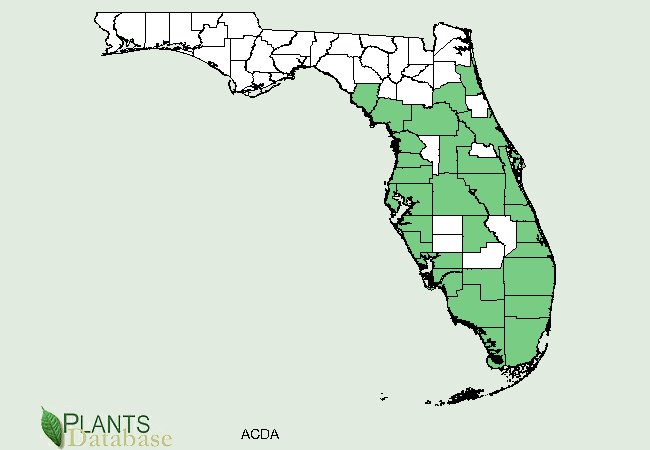

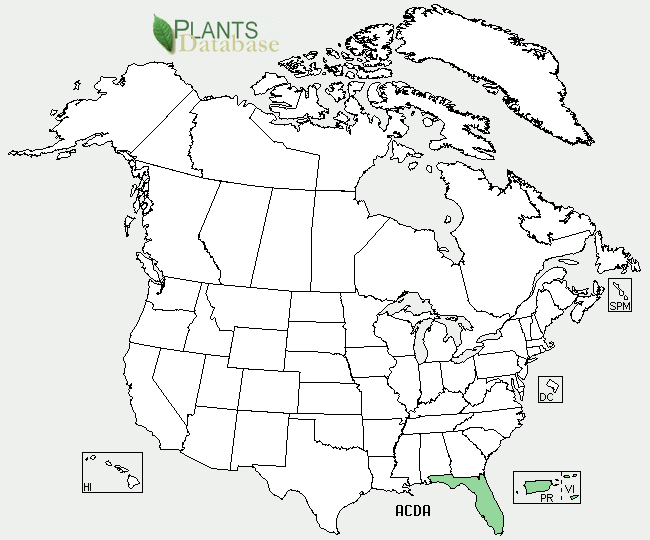
Links for Giant Leather Fern

